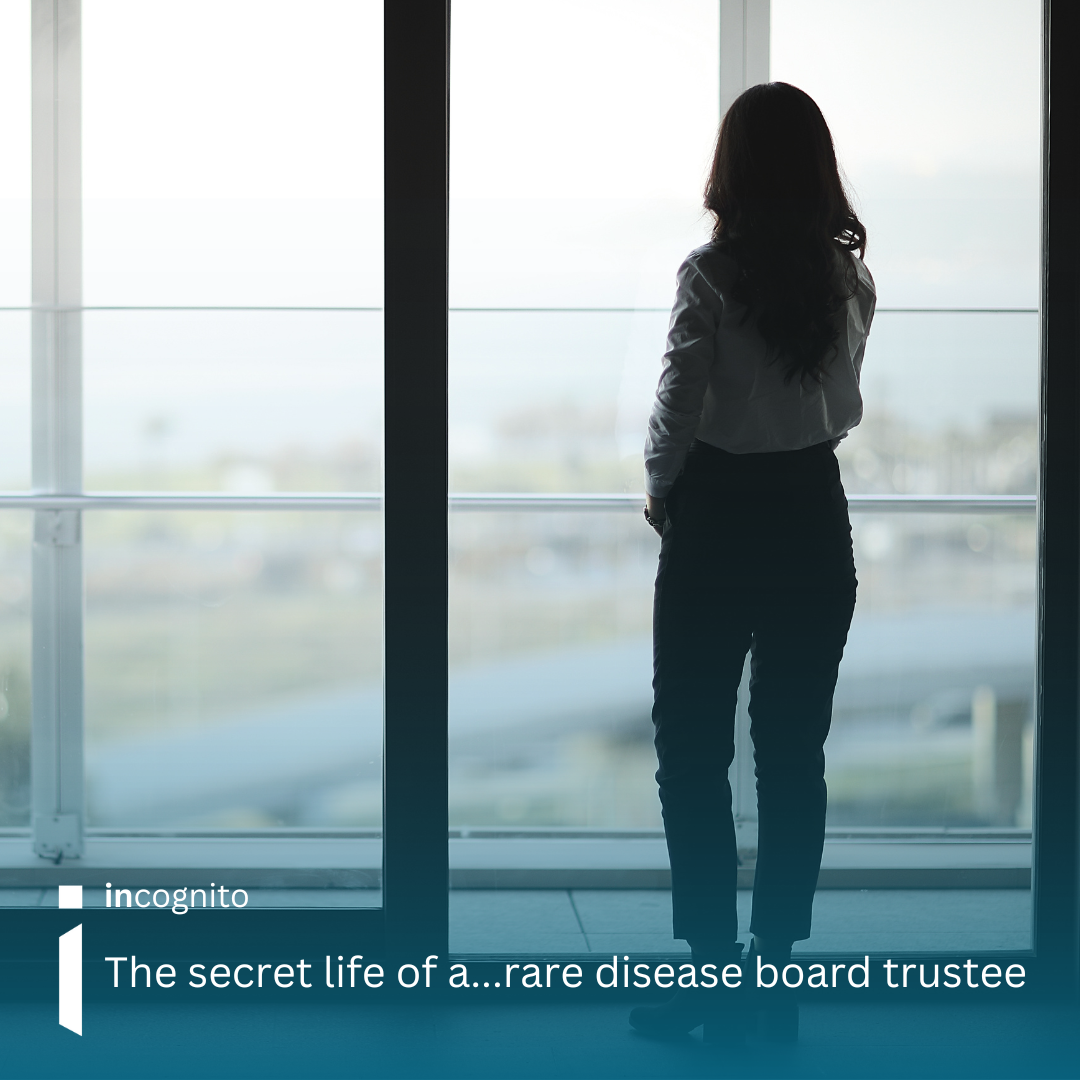incognito: the secret life of a…rare disease board trustee
Fostering true collaboration
Estimated reading time: 3 minutes

“A board trustee for a rare disease organisation, with a professional background in clinical trials, real-world evidence and observational studies. Passionate about building bridges between research, advocacy and industry to accelerate progress for patients—especially in the evolving field of real-world evidence (RWE) and artificial intelligence (AI).”
What is front of mind in your business currently?
Right now, the most pressing topic for me is how we can unlock the potential of artificial intelligence in rare disease research without losing trust, transparency and collaboration between stakeholders. AI offers a unique opportunity to accelerate insights from both clinical trial data and real-world evidence but its adoption is hindered by lack of understanding and alignment. It’s not enough to have the technology, we need a shared willingness to use it effectively, ethically and in a way that respects each party’s goals.
What are the greatest challenges you face as a CEO, what are your pain points and barriers to overcome?
One of the hardest realities in this space is how siloed it can be. Researchers, advocacy groups and industry representatives often operate in parallel rather than together, even when our ultimate goals align. Data is a particular sticking point, many researchers are reluctant to share the information they collect, often for understandable reasons such as protecting intellectual property, patient privacy or the integrity of their work.
However, this lack of data sharing slows down progress for patients who don’t have the luxury of time. The challenge is to create an ecosystem where data can be shared in a controlled, secure way while protecting each party’s purpose while still enabling collective advancement. This requires trust, mutual respect and mechanisms for fair contribution and recognition.
What are the greatest opportunities yet to be realised or on the horizon for your business?
We’re standing at the threshold of a transformative era for rare disease research. AI and machine learning (ML) could enable us to extract meaningful patterns from small, fragmented datasets that were previously considered too limited to drive action. Combined with real-world evidence, we could identify treatment responses, accelerate drug repurposing and optimise clinical trial design for rare disease populations.
The opportunity lies not just in technology but in fostering a new culture of collaboration, bringing together researchers, advocacy groups and industry under frameworks that balance openness with protection. If we can solve the “trust equation,” the horizon is full of breakthroughs.
If you could create overnight change, what would it be?
I would remove the barriers i.e. cultural, technical and political that prevent true collaboration in rare disease research. Imagine if data flowed seamlessly across borders and disciplines, governed by agreements that safeguarded everyone’s priorities but still allowed for collective use. In this ideal world, we could shrink the research timeline, increase trial success rates and most importantly, get effective treatments to patients faster.
What is the next ‘go-to’ event in your diary and why?
My next key event is a cross-sector rare disease innovation forum uniting academia, industry, advocacy and technology leaders. It is one of the rare occasions where stakeholders step outside their silos to engage in genuine, solution-driven dialogue. I’m particularly eager for discussions that advance AI literacy and explore practical frameworks for piloting AI to accelerate science and research. I also hope to see momentum around faster, more secure data sharing, and strategies to make collaboration the norm rather than the exception.
incognito provides a candid look behind corporate closed doors in the RARE disease world.
To access more incognito articles click below.

